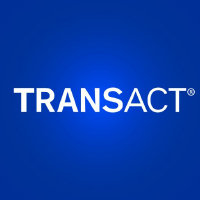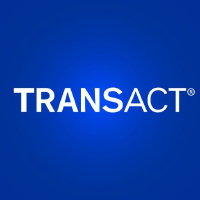
TransAct Technologies Inc
NASDAQ:TACT


| US |

|
Johnson & Johnson
NYSE:JNJ
|
Pharmaceuticals
|
| US |

|
Berkshire Hathaway Inc
NYSE:BRK.A
|
Financial Services
|
| US |

|
Bank of America Corp
NYSE:BAC
|
Banking
|
| US |

|
Mastercard Inc
NYSE:MA
|
Technology
|
| US |

|
UnitedHealth Group Inc
NYSE:UNH
|
Health Care
|
| US |

|
Exxon Mobil Corp
NYSE:XOM
|
Energy
|
| US |

|
Pfizer Inc
NYSE:PFE
|
Pharmaceuticals
|
| US |

|
Palantir Technologies Inc
NYSE:PLTR
|
Technology
|
| US |

|
Nike Inc
NYSE:NKE
|
Textiles, Apparel & Luxury Goods
|
| US |

|
Visa Inc
NYSE:V
|
Technology
|
| CN |

|
Alibaba Group Holding Ltd
NYSE:BABA
|
Retail
|
| US |

|
3M Co
NYSE:MMM
|
Industrial Conglomerates
|
| US |

|
JPMorgan Chase & Co
NYSE:JPM
|
Banking
|
| US |

|
Coca-Cola Co
NYSE:KO
|
Beverages
|
| US |

|
Walmart Inc
NYSE:WMT
|
Retail
|
| US |

|
Verizon Communications Inc
NYSE:VZ
|
Telecommunication
|
Utilize notes to systematically review your investment decisions. By reflecting on past outcomes, you can discern effective strategies and identify those that underperformed. This continuous feedback loop enables you to adapt and refine your approach, optimizing for future success.
Each note serves as a learning point, offering insights into your decision-making processes. Over time, you'll accumulate a personalized database of knowledge, enhancing your ability to make informed decisions quickly and effectively.
With a comprehensive record of your investment history at your fingertips, you can compare current opportunities against past experiences. This not only bolsters your confidence but also ensures that each decision is grounded in a well-documented rationale.
Do you really want to delete this note?
This action cannot be undone.

| 52 Week Range |
3.34
7.82
|
| Price Target |
|
We'll email you a reminder when the closing price reaches USD.
Choose the stock you wish to monitor with a price alert.

|
Johnson & Johnson
NYSE:JNJ
|
US |

|
Berkshire Hathaway Inc
NYSE:BRK.A
|
US |

|
Bank of America Corp
NYSE:BAC
|
US |

|
Mastercard Inc
NYSE:MA
|
US |

|
UnitedHealth Group Inc
NYSE:UNH
|
US |

|
Exxon Mobil Corp
NYSE:XOM
|
US |

|
Pfizer Inc
NYSE:PFE
|
US |

|
Palantir Technologies Inc
NYSE:PLTR
|
US |

|
Nike Inc
NYSE:NKE
|
US |

|
Visa Inc
NYSE:V
|
US |

|
Alibaba Group Holding Ltd
NYSE:BABA
|
CN |

|
3M Co
NYSE:MMM
|
US |

|
JPMorgan Chase & Co
NYSE:JPM
|
US |

|
Coca-Cola Co
NYSE:KO
|
US |

|
Walmart Inc
NYSE:WMT
|
US |

|
Verizon Communications Inc
NYSE:VZ
|
US |
This alert will be permanently deleted.
 TransAct Technologies Inc
TransAct Technologies Inc
TransAct Technologies Inc
TransAct Technologies, Inc. operates as a software-driven technology and printing solutions company. The company is headquartered in Hamden, Connecticut and currently employs 118 full-time employees. Its products are designed based on customer requirements and are sold under the BOHA!, AccuDate, EPICENTRAL, Epic, Ithaca and Printrex brands. Through the TransAct Services Group (TSG), it provides a range of supplies and consumables used in the printing activities of customers. The company designs, develops and markets a range of transaction-based and specialty printers and terminals using thermal printing technology. Its maintenance services include the sale of extended warranties, multi-year maintenance contracts, a 24-hour guaranteed replacement product service called TransAct Xpress. Its EPICENTRAL Print System (EPICENTRAL), that enables casino operators to create promotional coupons and marketing messages and print them in real time at the slot machine.

TransAct Technologies, Inc. operates as a software-driven technology and printing solutions company. The company is headquartered in Hamden, Connecticut and currently employs 118 full-time employees. Its products are designed based on customer requirements and are sold under the BOHA!, AccuDate, EPICENTRAL, Epic, Ithaca and Printrex brands. Through the TransAct Services Group (TSG), it provides a range of supplies and consumables used in the printing activities of customers. The company designs, develops and markets a range of transaction-based and specialty printers and terminals using thermal printing technology. Its maintenance services include the sale of extended warranties, multi-year maintenance contracts, a 24-hour guaranteed replacement product service called TransAct Xpress. Its EPICENTRAL Print System (EPICENTRAL), that enables casino operators to create promotional coupons and marketing messages and print them in real time at the slot machine.





























 You don't have any saved screeners yet
You don't have any saved screeners yet
